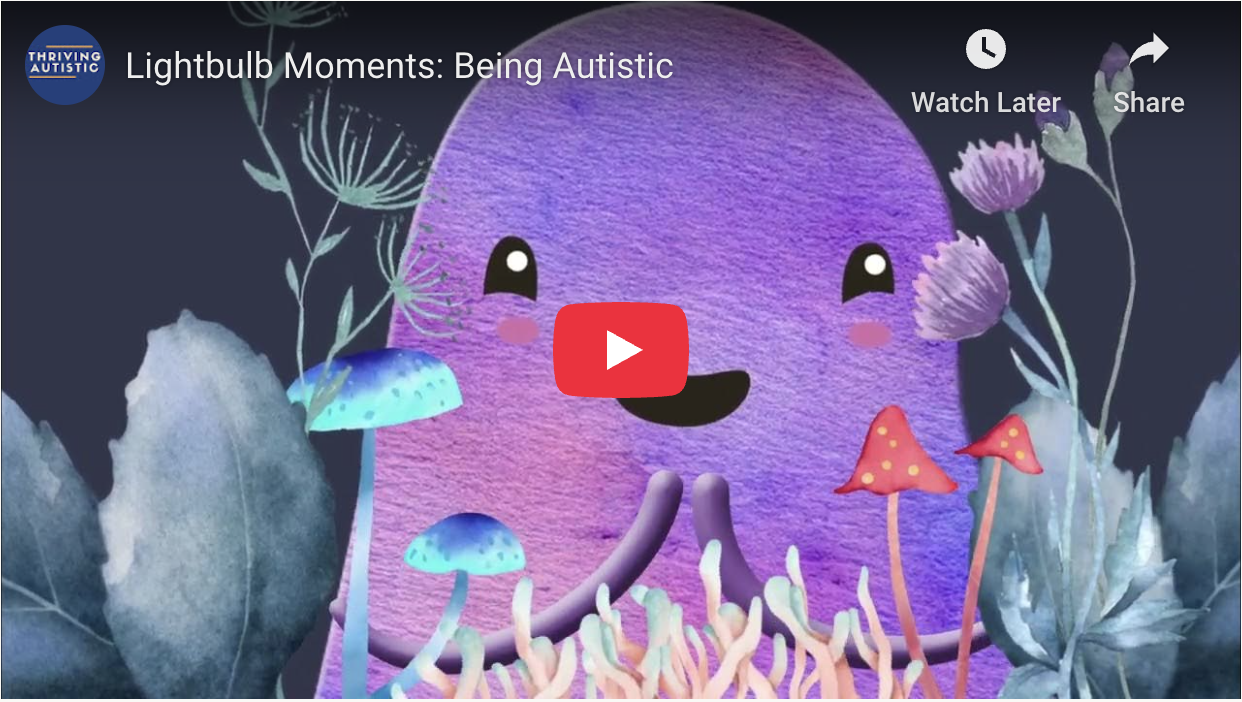Your basket is currently empty!

Monotropism, Holotropism & Floatation Experiences
I am autistic and monotropic, and I am interested in exploring Helen Mirra’s theory of holotropism (2023) and how this may impact flow states and regulation. Holotropism synthesises the theory of monotropism (Murray, 2005) with deep ecology and holistic anatomy. Holotropism is a:
“multi-dimensional, spacious, edgeless terrain under the monotropism map…To be holotropic is to have wide open sensory gates. To participate in/as the immense world without becoming overwhelmed, we holotropes have two central methods: in, by hyperfocusing our attention on one sensory or cognitive path, and as, through synthesising our experience into coherence. A sense of wholeness occurs through these processes — less consciously in hyperfocus, more consciously in coherence.” (Mirra, 2023)
Flow & Monotropism
“Monotropism is a neurodiversity-affirming theory of autism (Murray et al.
2005). Autistic /ADHD/ AuDHD people are more likely to be monotropic
(Garau et al., 2023). Monotropic people have an interest-based nervous system. This means they focus more of their attention resources on fewer things at any one time compared to other people who may be polytropic. Things outside an attention tunnel may get missed and moving
between attention tunnels can be difficult and take a lot of energy.
Monotropism can have a positive and negative impact on sensory, social and communication needs depending on the environment, support provided and how a person manages their mind and body.” (Edgar, 2024). Flow states are an intrinsic part of a monotropic person’s experience when engaged in their passions and deeply immersed in their interests.
Csikszentmihalyi was interested in finding out about flow states and intrinsically rewarding ways of being. He was interested in how and why people became engaged, not for external rewards, “not as compensation for past desires, not as preparation for future needs, but as an ongoing process which provides rewarding experiences in the present.” His research concludes that happiness is an internal state of being that can be achieved through flow.
He suggests one of the main elements of flow is the merging of action and awareness. For flow to be maintained, he says, “one cannot reflect on the act of awareness itself. When awareness becomes split so that one perceives the activity from ‘outside,’ flow is interrupted… These interruptions occur when questions flash through the actor’s mind: ‘Am I doing well?” What am I doing here?’ … When one is in a flow episode … these questions simply do not come to mind.”
Being in flow can be a joyful, happy state, but you can’t will yourself into a flow; there has to be a desire and interest that leads you there, perhaps a sense of wonder that draws you into a space you are comfortable with to explore your passions further. For Autistic/ ADHD people who are monotropic, it may be that they find it easier to enter a deep flow state when engaged in their monotropic interests; it may feel more satisfying and intense, all-consuming as more energy and attention resources are processed into fewer channels than for polytropic people.
In a sensory deprivation tank, with no external stimuli, you are left with your bodymind and following the desire lines of your thoughts into unknown spaces, spaces that perhaps can’t be accessed otherwise. A deep flow state emerges from a sensory deprivation experience that leaves an openness for uninterrupted thoughts and sensations of just being in the moment and an expansion of the mind. A sense of freedom and weightless-ness not just of the body floating but of the mind too.
Flow states may be more intense for monotropic people; this can be positive and negative. It can be highly regulating when the flow is positive but also dysregulating when it latches onto something negative. Being monotropic it may enable easier access into a flow state as there are fewer attention channels to compete with resources and input.
Being in a flow state can be a way of self-regulating, but it may also be the reason why other things are more difficult, such as switching attention to new tasks. Being in a deep flow may leave people in a state of inertia, immersed in cycles of looping concerns (Hallett, 2021) and feeling ‘stuck, with no way out’ (Buckle, 2021).
Floatation and Flow
Hutchinson and Perry (2003) explored Csikszentmihalyi’s flow theory through the experience of floatation tanks (also known as sensory deprivation tanks). They suggest that the unique experience of a floatation tank is a “specific and reliable creation tool. On the whole, floaters seem to experience flow every time they enter the tank. Even better, they experience that most elusive and pleasurable thing: long periods of pure, uninterrupted flow. One reason the tank has this unique effect is that it is both experience and environment.”
If you are monotropic, life is likely to feel very intense due to the way you process everything from sensory stimuli and social interaction and the ways you navigate the demands of everyday life, always needing to divide attention and tear yourself away from the pull of your monotropic passions, the pull likely feeling very strong at times due to the feeling of flow it may create.
When you are in a floatation tank, there are no other demands; there is no sound, no discernable scent, and no other desire or stimuli to spark interest. As the salt water is body temperature, the physical body seems almost to dissolve or melt away as it becomes one with the water. With no other stimuli, it may feel like the body and mind become a pure bodymind, a oneness with the water and environment. As Hutchinson says (2003, p111), “When you are floating, there is nothing in the tank that happens that is not you.”
Hutchinson draws on Csikszentmihalyi’s work by discussing “narrowing the field of consciousness. Floatation tanks are perfect environments for consciousness to expand, enabling one to be purely in the moment. For autistic/ADHD people, noise, lights, scents, people, demands and any external stimuli can overwhelming at times; with all this eliminated, you are left to just be. You close the lid, and there is a nothingness around you, waiting to be filled with thoughts or to absorb you in deep rest.
The saltwater is at body temperature, so once you are floating, there may be no definable awareness of where your body starts or ends. It may feel like it is dissolving into the space around you. This may invoke a hyper-awareness of the physical self; with no other stimuli, all you can focus on is breathing and the sensation of every muscle movement you may not have noticed before when not floating. After a time, even the feeling of having a body may dissolve as the mind expands and fills the space, or it may feel like the nothing-ness is filling you, enabling deep profound regulation, restoration and rest.
Profound Rest and Regulation
With no external input, there is an opportunity for an increased awareness and coherence of everything happening within your bodymind at a much deeper level; a sense of wholeness may be achieved as you are no longer splitting attention and fragmenting. It may feel safer as the environment is predictable, and all external unexpected lights, sounds, movements and social interactions are eliminated for the duration of the float; it can feel liberating.
Time itself seems to expand as there is nothing except the self and breathing to impact or give reference to the passing of time. An hour in a floatation tank could feel like anywhere between 10 minutes to 10 hours, depending on the experience. It can be the most deeply restful state to be in, free from everything, it allows a sense of autonomy and a chance to gain control of thoughts without anything external impacting or distracting you. Mirra suggests that;
“If hyperfocus is flow, coherence is profound rest…If we are only cycling between hyperfocus and disruption of hyperfocus, our bodies as whole systems are neglected. Regular periods of coherence are, therefore, mandatory for our well-being. As we practice with coherence, over time, we may choose more time in coherence and less in hyperfocus. (De-centrating rather than concentrating.)” (Mirra, 2023)
Csikszentmihalyi observes that a person can only achieve flow when the environment is right and they feel in control and safe. For a monotropic person, life may feel intensely overwhelming; constantly having to divide limited attention resources to manage the multiple demands of life is utterly exhausting. Floatation experiences may help to give moments of control and help with regulation and rest, the effects often ripple through the bodymind for days afterwards, feeling revived and having a better balance.
When a person is floating, it can enable a natural flow state. It may feel completely liberating for some autistic monotropic people with no external demands and no sensory stimuli competing for attention resources. It allows the bodymind to return to a natural way of being and to expand enabling new thoughts and possibilities to emerge.
The expansion of the body and mind creates a space for recovery and regulation to take place in ways that are not possible in real life when not floating. Floatation experiences may allow monotropic, holotropic people to safely enter “multi-dimensional, spacious, edgeless terrains under the monotropism map” (Mirra, 2023), this could allow the sensory gates to open further without becoming overwhelmed and enable much-needed profound rest from what can be a very overwhelming world.
References
Csikszentmihalyi, M., & Csikszentmihalyi, I. S. (1992). Optimal experience: Psychological Studies of Flow in Consciousness. Cambridge University Press.
Hutchison, M., & Perry, L. (2003). The Book of Floating: Exploring the Private Sea.
Mirra, H. (2023). Holotropism: a multi-dimensional, spacious, edgeless terrain. Medium. https://hmirra.medium.com/holotropism-1cdf99c00b74
Murray, D., Lesser, M., & Lawson, W. (2005). Attention, monotropism and the diagnostic criteria for autism. Autism (London), 9(2), 139–156. https://doi.org/10.1177/1362361305051398
More about holotropism
https://www.bexmilgatetherapy.com/blog/exploring-holotropism-an-autistic-and-synaesthetic-ramble
https://autcollab.org/2023/06/26/life-is-at-bottom-diversity/
https://shawnverma.wordpress.com/about/
https://stimpunks.org/glossary/holotropism/
Latest Posts
-
Autistic Burnout – Supporting Young People At Home & School

Autistic burnout in young people is real—and recovery starts with understanding. This post offers neuroaffirming ways to spot the signs, reduce demands, and truly support. 💛 #AutisticBurnout #Neuroaffirming #Monotropism #AutisticSupport
-
Monotropic Interests and Looping Thoughts

The theory of monotropism was developed by Murray, Lawson and Lesser in their article, Attention, monotropism and the diagnostic criteria for autism (2005). Monotropism is increasingly considered to be the underlying principle behind autism and is becoming more widely recognised, especially within autistic and neurodivergent communities. Fergus Murray, in their article Me and Monotropism:…
-
Map of Monotropic Experiences

Monotropism seeks to explain Autism in terms of attention distribution and interests. OSF Preprints | Development and Validation of a Novel Self-Report Measure of Monotropism in Autistic and Non-Autistic People: The Monotropism Questionnaire This map highlights 20 common aspects of my personal monotropic experiences. How many do you experience? Where are you on the map…
-
Autistic Burnout – Supporting Young People At Home & School

Being autistic is not an illness or a disorder in itself, but being autistic can have an impact on a person’s mental and physical health. This is due to the often unmet needs of living in a world that is generally designed for the well-being of people who are not autistic. In addition, three-quarters of…
-
The Double Empathy Problem is DEEP

“The growing cracks in the thin veneer of our “civilised” economic and social operating model are impossible to ignore”, Jorn Bettin (2021). The double empathy problem (Milton, 2012) creates a gap of disconnect experienced between people due to misunderstood shared lived experiences. It is “a breakdown in reciprocity and mutual understanding that can happen between people…
-
Top 5 Neurodivergent-Informed Strategies

Top 5 Neurodivergent-Informed Strategies By Helen Edgar, Autistic Realms, June 2024. 1. Be Kind Take time to listen and be with people in meaningful ways to help bridge the Double Empathy Problem (Milton, 2012). Be embodied and listen not only to people’s words but also to their bodies and sensory systems. Be responsive to people’s…
-
Autistic Community: Connections and Becoming

Everyone seeks connection in some way or another. Connections may look different for autistic people. In line with the motto from Anna Freud’s National Autism Trainer Programme (Acceptance, Belonging and Connection), creating a sense of acceptance and belonging is likely to be more meaningful for autistic people than putting pressure on them to try and…
-
Monotropism, Autism & OCD

This blog has been inspired by Dr Jeremy Shuman’s (PsyD) presentation, ‘Neurodiversity-Affirming OCD Care‘ (August 2023), available here. Exploring similarities and differences between Autistic and OCD monotropic flow states. Can attention tunnels freeze, and thoughts get stuck? Autism research is shifting; many people are moving away from the medical deficit model and seeing the value…
-
Monotropism Questionnaire & Inner Autistic/ADHD Experiences

Post first published 28th July 2023 Over the past few weeks, there has been a sudden surge of interest in the Monotropism Questionnaire (MQ), pre-print released in June 2023 in the research paper ‘Development and Validation of a Novel Self-Report Measure of Monotropism in Autistic and Non-Autistic People: The Monotropism Questionnaire.‘ by Garau, V., Murray,…
-
Penguin Pebbling: An Autistic Love Language

Penguin Pebbling is a neurodivergent way of showing you care, like sharing a meme or twig or pretty stone to say “I’m thinking of you,” inspired by penguins who gift pebbles to those they care about.
-
Discovering Belonging: Creating Neuro-Affirming Animations with Thriving Autistic

Discovering Belonging: Neuro-Affirming Animations with Thriving Autistic. Celebrate Autistic identity through the Discovery Programme and new animations that explore belonging, strengths, and community.
-
Being Autistic shapes grief: Explore unique paths through loss and affirming support

Explore how Autistic people experience grief differently and discover affirming resources, support, and strategies for navigating loss with compassion.
-
Reflections on the Autistic Mental Health Conference 2025

Reflections On The Autistic Mental Health Conference. An Interview between David Gray-Hammond & Helen Edgar













